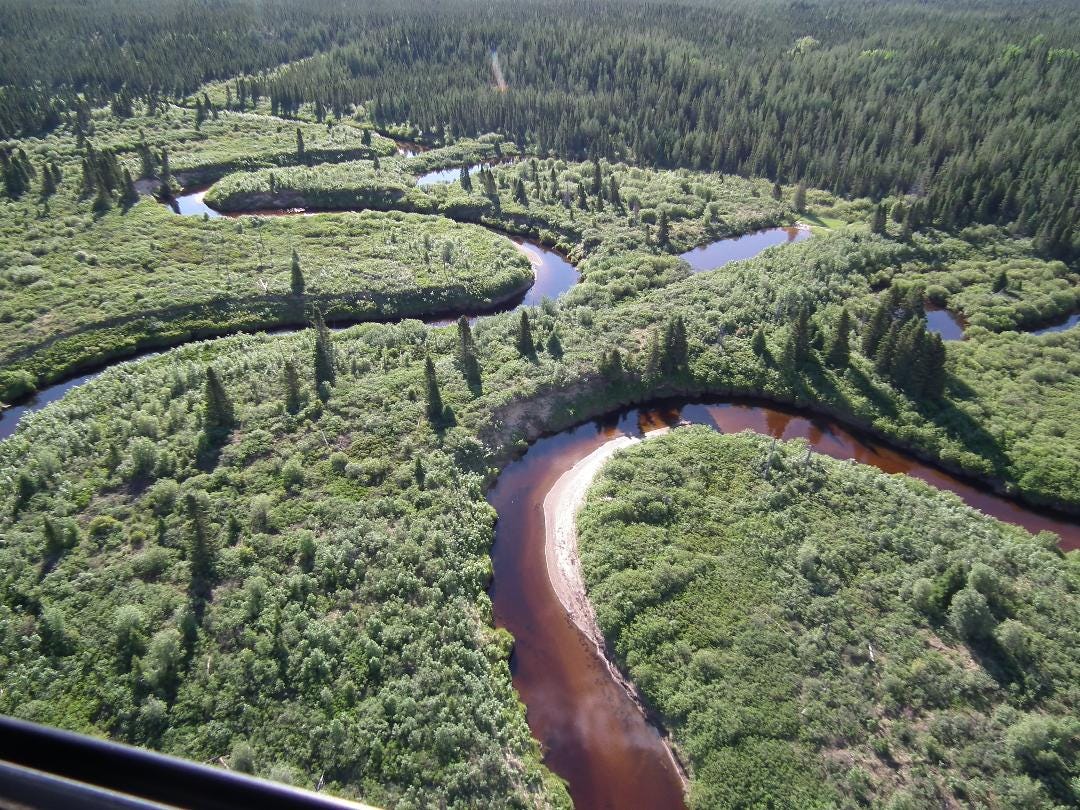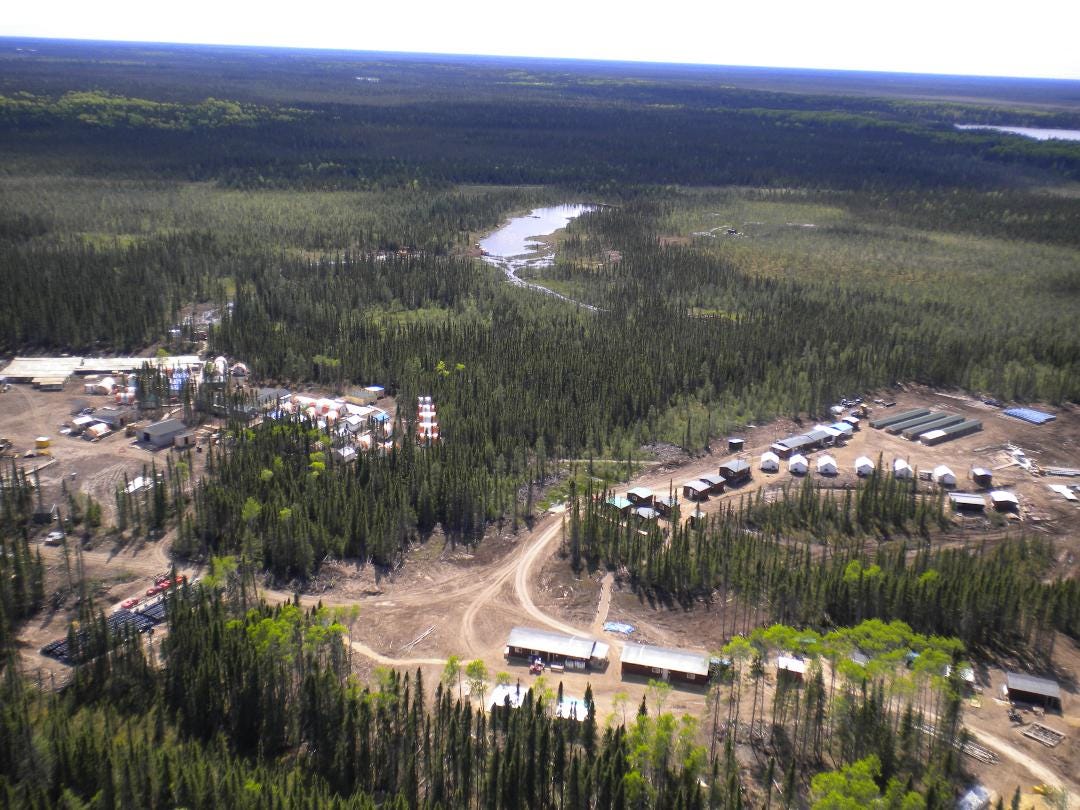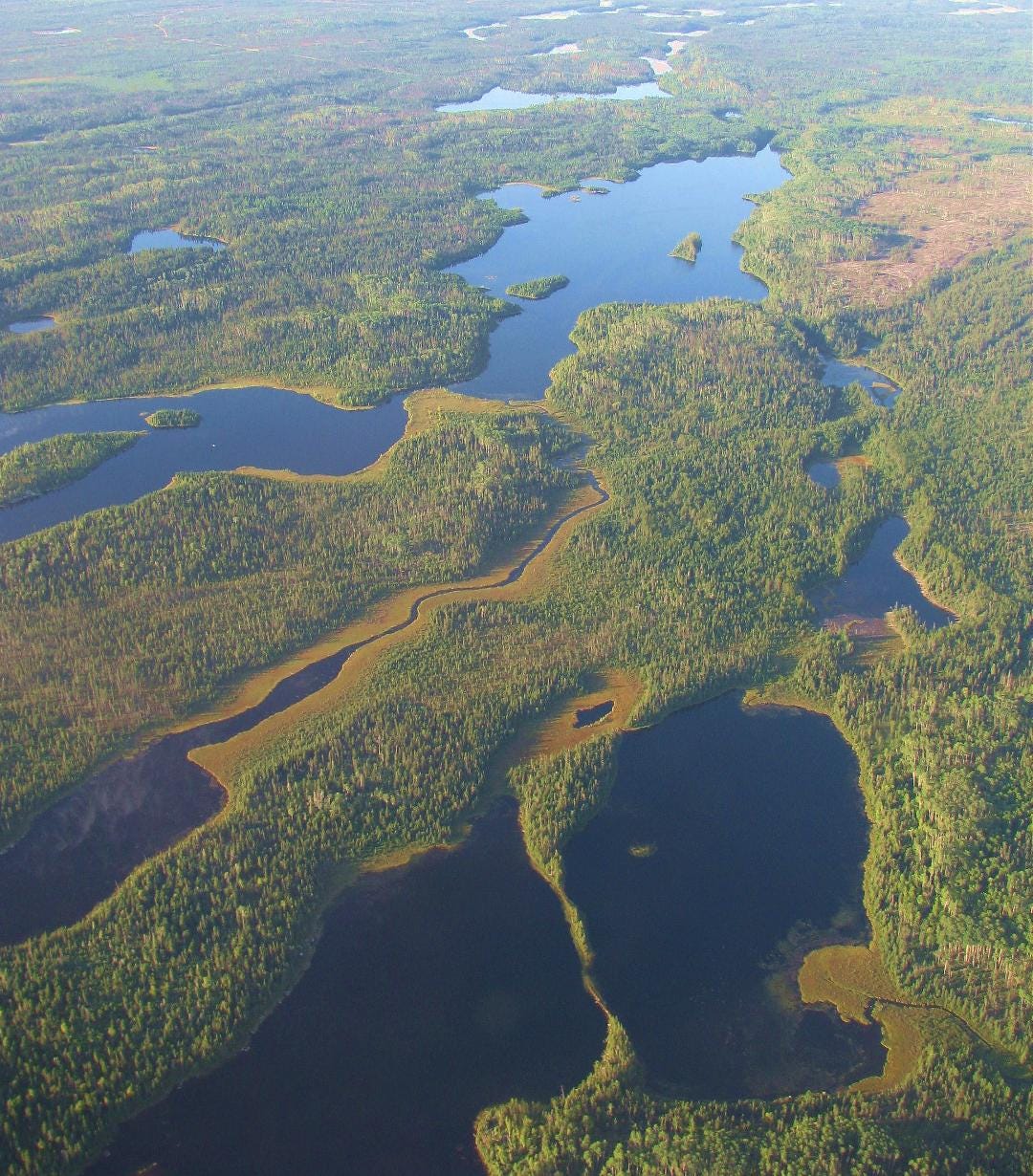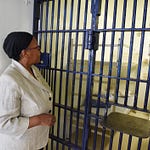Dr. Justina Ray, President and Senior Scientist of Wildlife Conservation Society Canada Photo: Provided by Wildlife Conservation Society Canada
In northern Ontario, Wildlife Conservation Society (WCS) Canada’s research and conservation program works for better outcomes for people and the environment by connecting field-based science to improved policy, planning, and decision-making. Their work includes co-creating ecological research programs with First Nations, supporting Indigenous-led conservation initiatives, and engaging on policies and management related to the environment.
Ring of Fire free-flowing rivers Credit: Mike Oldham
Dr. Justina Ray has been President and Senior Scientist of WCS Canada since its incorporation in 2004. She has led research and policy efforts focused on biodiversity conservation in northern boreal landscapes, including the far north in Ontario.
Dr. Ray has served on numerous government advisory panels on species at risk as well as land use planning and is an Adjunct Professor at both the University of Toronto and Trent University.
Dr. Ray and I discuss the Ford government’s plans for the mineral-rich region, about 500 km/310 miles northeast of Thunder Bay, that’s known as the Ring of Fire. And, yes, the area was named for the Johnny Cash song written by June Carter and Merle Kilgore.
Ring of Fire written while June Carter and Johnny Cash were married to other people, describes June’s intense and all consuming love for Johnny despite being aware of his unstable and self-destructive tendencies. Carter and Cash eventually married.
However, naming northern Ontario’s ecologically sensitive area, the Ring of Fire, ominously foreshadows the heat that will be generated by the destruction of ancient peat bogs and the felling of trees. Large amounts of carbon dioxide will be released along with off-gassing, pollution and carbon emissions that come with essential mineral extraction and transportation. Bill 5, Protect Ontario by Unleashing Our Economy Act, 2025, will expedite development of the Ring of Fire and will prove to be extremely destabilizing and self-destructive environmental and climate policy.
The Ontario government website, which has not been updated since 2022, mistakenly claims the Ring of Fire covers 5,000 square kilometres of pristine landscape while the actual mineral exploration footprint extends over 8,600 square kilometers. Developing this area will dramatically undermine Canada’s goal to reduce greenhouse gas emissions by up to 45 per cent below 2005 levels by 2030 and to achieve net-zero emissions by 2050. A realistic view would acknowledge that mining the Ring of Fire will accelerate the global climate crisis. Think of the Alberta tar sands and its destructive environmental effects and accelerated greenhouse gas emissions.
The Ring of Fire is one of the largest peatland and wetland complexes in the world. Carbon sequestering peatlands are at risk during development and mining of the Ring of Fire. Credit: Mike Oldman
According to WCS Canada’s website:
The northern half of Ontario is a remote area covered by dense boreal forest in the south and vast peatlands in the north, bound together by thousands of freshwater lakes and some of the world’s longest remaining free-flowing rivers. The peatlands are globally important for carbon storage and climate regulation, and are playing a vital role in fighting climate change. The myriad of connected habitats are home to thousands of wildlife species, from migratory songbirds, to woodland caribou, to endangered and ancient lake sturgeon. These lands and waters have supported Indigenous Peoples for millennia and form the basis of inherent and Treaty Rights. These values and rights need to be at the forefront of all conversations about resource extraction and infrastructure development.
A mining exploration camp Credit: Cheryl Chetkiewcz
In Ontario, anyone can become a prospector by paying a $25 fee and taking a one-hour online course. These folks can then stake an online claim and do invasive assessment work without free, prior and informed consent from Indigenous Nations that may be impacted.
The assessment work allowed by the Mining Act includes building heavy machinery trails, clearing trees, cutting extensive lines, digging pits and trenches, and stripping all vegetation and soil off bedrock. All of this work can be performed without consultation with, nor consent from, impacted First Nations.
That violates s.35 of the Constitution Act, which requires meaningful consultation and accommodation before activities that could impact First Nations’ rights take place. It also violates the United Nations (UN) Declaration on the Rights of Indigenous Peoples (UNDRIP) which requires free, prior, and informed consent before industry encroaches on traditional lands.
As of March 10, 2025, a total of 43,470 individual claims had been made by 24 companies and individuals covering 8,600 square kilometers within the Ring of Fire.
Freshwater lakes in the Ring of Fire Credit: Cheryl Chetkiewcz
Dr. Ray explains what is at risk if the Ford government insists on cutting “red tape” in order to expedite access to the minerals contained within the Ring of Fire. We also discuss the practicality of undertaking what amounts to a mega-project that involves multiple public and private stakeholders with a projected cost of $1 billion or more that will take years to build and that will impact millions of people across Canada and around the world while profoundly transforming the region's environment, economy, social structures and cultural values.
Dr. Ray also shares actions Small Change listeners can take to protect this significant ecological zone.
Additional resources:
Podcast with Grassy Narrows lawyer Jackie Esmonde: Grassy Narrows challenges Ford’s Building More Mines Act
Ford takes a page out of Trump's anti-environmental playbook
Actions:
The Ford government’s Bill 5, Protect Ontario by Unleashing Our Economy Act, 2025, passed second reading and is open for comments until 11:59 p.m. on Saturday, May 17, 2025.
Bill 5 will give sweeping powers to cabinet to benefit a select few developers and industries at the expense of the public good, climate goals, environmental protections and Indigenous rights.
Ford has stated the Ring of Fire will be among the first places to be dubbed a special economic zone, potentially speeding up proposed mining activities in the vast Northern Ontario region.
Ecojustice created an easy way to submit a comment to the Ontario government urging them to withdraw Bill 5. Take one minute to Tell Doug Ford: Ontario is not for sale! here.
Ecojustice strongly encourages everyone to also reach out to their local MPP.
Thanks to everyone who read today’s article and listened to my podcast. With your financial support, a little Nicoll can make a lot of change.
Music: Real Estate by UNIVERSFIELD is licensed under a Attribution 4.0 International License. freemusicarchive.org.
*Be sure to download the Substack app to get the most from your podcast experience.
















Share this post